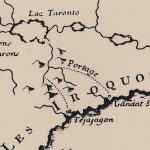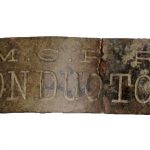Recognizing the heritage value of the archaeological resources on its lands, the TRCA has prepared an Archaeological Master Plan that documents archaeological sites and makes recommendations for the proper management of these resources.
New sites and other cultural heritage landscapes continue to be found every year, and along with that, new educational opportunities offered to enhance local knowledge.
WHAT’S NEW
 Archaeology Opens a Window on the History of Indigenous Peoples in the GTA (6/21/2018) - Archaeological investigations in the Greater Toronto Area have identified nearly 300 sites related to Indigenous occupation -- a powerful reminder that this area has been the homeland of Indigenous peoples… ...
Archaeology Opens a Window on the History of Indigenous Peoples in the GTA (6/21/2018) - Archaeological investigations in the Greater Toronto Area have identified nearly 300 sites related to Indigenous occupation -- a powerful reminder that this area has been the homeland of Indigenous peoples… ... Mystery Train: How Did a Conductor’s Badge Get From Michigan to Markham? (3/6/2018) - This month, the TRCA Archaeology team shines our spotlight on an unusual artifact recovered from the Lewis Site in the Town of Whitchurch-Stouffville, formerly the Township of Markham: a metal badge… ...
Mystery Train: How Did a Conductor’s Badge Get From Michigan to Markham? (3/6/2018) - This month, the TRCA Archaeology team shines our spotlight on an unusual artifact recovered from the Lewis Site in the Town of Whitchurch-Stouffville, formerly the Township of Markham: a metal badge… ...
Program
The archaeological community has long recognized that the unique riverine association of TRCA lands provides an unlimited potential for our lands to hold archaeological resources. Recognizing the heritage value of the archaeological resources on its lands, TRCA, working with the province, prepared an Archaeological Master Plan that documented archaeological sites and made recommendations for the proper management of these resources. As a result, in 1988, TRCA adopted The Archaeological Heritage Strategy as an integrated component of the Greenspace Plan for the Greater Toronto Region. The intent of this program is to present a balanced and integrated program of inventory, management and interpretation for archaeological heritage resources.
The Archaeological Resource Management Program is comprised of two main components: Education and Resource Management.
Aboriginal Engagement
TRCA’s jurisdiction contains many overlapping Traditional territories and Treaty areas relating to Anishnaabe, Haudenosaunee, Huron-Wendat and Métis nations, thus TRCA lands contain hundreds of known ancestral archaeological sites as well as high potential for many hundreds more. TRCA’s in-house licensed archaeologists regularly communicate two-way information with the modern descendant communities of the people who occupied these past site locations, particularly when there is the need to investigate a site during an Archaeological Assessment. For more information about the Engagement process, contact Kathryn Brown at 416.661.6600 ext. 6407 or kbrown@trca.on.ca.
TRCA has formulated Engagement Guidelines to obtain guidance on stewardship and management decisions within the archaeological assessment process and other TRCA land management processes. TRCA’s Engagement Guidelines (approved at Authority Board meeting #6/15 on June 26, 2015), outline and provide guidance on TRCA’s commitment to growing our relationships with Anishinaabe, Huron-Wendat, Haudenosaunee and Métis communities, whether that be relatively informal partnerships in various initiatives or formal engagement for TRCA projects subject to legislation requiring engagement. TRCA’s overall aim is to develop a positive relationship with communities whose interests may be impacted by TRCA projects, through a process of meaningful, mutually respectful engagement.
Partners
During the past 35 years, various partnerships have evolved between TRCA Archaeology and a variety of agencies and school boards for the purposes of site protection and public education, including:


